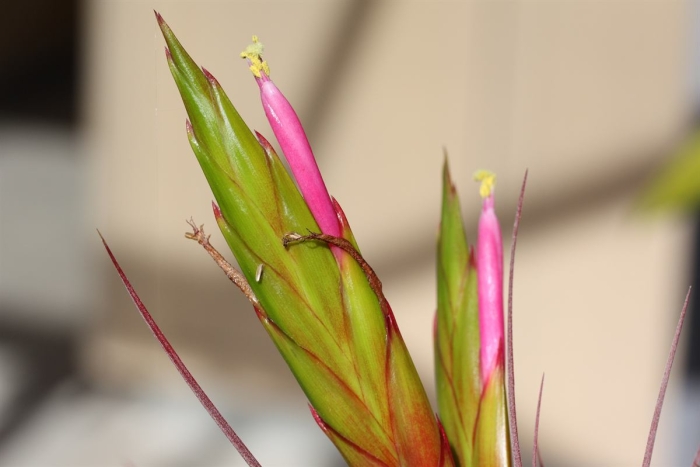Air Plant
(Tillandsia concolor)
Air Plant (Tillandsia concolor)
/
/

Bocabroms
CC BY-SA 3.0
Image By:
Bocabroms
Recorded By:
Copyright:
CC BY-SA 3.0
Copyright Notice:
Photo by: Bocabroms | License Type: CC BY-SA 3.0 | License URL: https://creativecommons.org/licenses/by-sa/3.0 | Uploader: Bocabroms | Publisher: Wikimedia Commons | Title: 20100623_T_concolor.jpg | Notes: {{Information |Description={{fr|[[:fr:Toreya|]] californica dans le [[:fr:Parc Oberthür|]] à [[Rennes]].}} {{en|[[:en:Torreya californica|]] in Oberthür park in [[Rennes]].}} {{location|48|6|47.46|N|1|39|35.3|W|region:FR_heading:SSE}} |Source=own work |









Estimated Native Range
Summary
Tillandsia concolor, commonly known as Air Plant, is an evergreen epiphytic succulent native to the semi-arid regions, deciduous forests, and pine-oak woodlands of Mexico and Central America. It typically grows to a height and width of 0.5-0.8 feet (0.2-0.2 meters). This species is characterized by its rosette of stiff, green leaves that often take on a reddish hue in bright light. Tillandsia concolor produces vibrant bracts that range from green to red, with purple flowers emerging between late winter and mid-summer, depending on the climate. The flowers are quite showy and add a splash of color to the plant’s overall appearance.
Air Plants are valued for their minimal soil requirements and are often used in vertical gardens, terrariums, and as ornamental objects in homes and offices. They are particularly appreciated for their ease of maintenance and ability to grow without soil, obtaining moisture and nutrients from the air. In cultivation, they require bright, indirect light or full sun in cooler climates, and should be misted regularly or soaked briefly in water to meet their very low water needs. They are not frost-tolerant and should be grown indoors or in a protected area if temperatures drop below freezing. While generally pest-free, they can sometimes be affected by scale insects or fungal diseases if overwatered or if airflow is poor.CC BY-SA 4.0
Air Plants are valued for their minimal soil requirements and are often used in vertical gardens, terrariums, and as ornamental objects in homes and offices. They are particularly appreciated for their ease of maintenance and ability to grow without soil, obtaining moisture and nutrients from the air. In cultivation, they require bright, indirect light or full sun in cooler climates, and should be misted regularly or soaked briefly in water to meet their very low water needs. They are not frost-tolerant and should be grown indoors or in a protected area if temperatures drop below freezing. While generally pest-free, they can sometimes be affected by scale insects or fungal diseases if overwatered or if airflow is poor.CC BY-SA 4.0
Plant Description
- Plant Type: Succulent
- Height: 0.5-0.8 feet
- Width: 0.5-0.8 feet
- Growth Rate: Moderate
- Flower Color: Green, Red
- Flowering Season: Spring, Summer, Fall, Winter
- Leaf Retention: Evergreen
Growth Requirements
- Sun: Full Sun, Part Shade
- Water: Very Low, Low
- Drainage: Fast
Common Uses
Low Maintenance, Potted Plant, Rock Garden, Street Planting
Natural Habitat
Native to semi-arid regions, deciduous forests, and pine-oak woodlands of Mexico and Central America
Other Names
Common Names: Concolor Air Plant
Scientific Names: , Tillandsia concolor, Tillandsia palmasolana,
GBIF Accepted Name: Tillandsia concolor L.B.Sm.